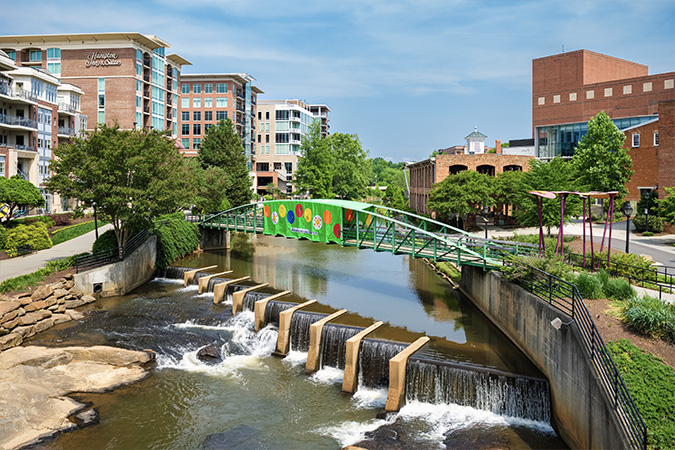
28 May The Power of Placemaking: Strengthening Community Brands and Fostering Vibrant Spaces
When we think of “placemaking,” vibrant images often come to mind: funky murals on brick walls, café lights strung above, and sunny afternoons spent sipping beverages in colorful Adirondack chairs. These are indeed hallmarks of modern placemaking. If you’ve visited a major urban city, you’ve likely encountered such placemaking efforts, enhancing your experience and enjoyment of the space.
But what exactly do we mean when we talk about placemaking? It goes deeper than bright chairs and string lights. Placemaking has emerged as a powerful tool for communities looking to enhance their identity, engage residents, and attract visitors. More than just a buzzword, placemaking is a strategic approach to planning and developing spaces that reflect the unique culture, history, and aspirations of a community. By leveraging placemaking principles, communities can reinforce their brand and create vibrant, inviting environments that drive economic development and social cohesion.
The Essence of Placemaking
At its core, placemaking is about transforming public spaces into dynamic places that promote people’s health, happiness, and well-being. It involves a collaborative process where community members, local governments, and various stakeholders come together to envision and implement changes that improve the quality of life in their area. From parks and plazas to streets and markets, every space has the potential to become a focal point of community life.
Building Community Identity Through Placemaking
Placemaking plays a crucial role in reinforcing a community’s brand. By focusing on the unique attributes and stories that make a place special, placemaking initiatives can highlight these elements and integrate them into the physical and social fabric of the area. This approach not only enhances the aesthetic appeal of a place but also deepens the connection residents feel to their community.
- Highlighting Local Culture and History: Incorporating local art, historical markers, and cultural symbols into public spaces can celebrate a community’s heritage and identity.
- Creating Signature Spaces: Developing iconic landmarks or gathering places that are distinctly tied to the community can serve as visual and emotional anchors for residents and visitors alike.
- Engaging the Community: Involving residents in the planning and design process ensures that the spaces reflect the desires and needs of those who will use them, fostering a sense of ownership and pride.
One example of successful placemaking is the revitalization of downtown Greenville, South Carolina. Over the past few decades, Greenville has transformed its downtown from a struggling area into a vibrant, bustling center of activity.
The city invested in Falls Park on the Reedy, an urban park featuring the Liberty Bridge, public art, and walking trails. This signature space symbolizes Greenville’s resurgence and attracts both locals and tourists. The redevelopment of Main Street, with wide sidewalks, outdoor dining, and numerous events, further enhances Greenville’s appeal, making it a model for downtown revitalization and placemaking, proving that the two go hand-in-hand.
Economic and Social Benefits of Placemaking
Effective placemaking can significantly boost a community’s economic and social vitality. For example, a survey of Urban Land Institute members in 2016 showed that 91 percent of members surveyed agree arts and culture add value to real estate development projects. By creating attractive, engaging spaces rooted in culture, communities can draw tourists, attract new businesses, and retain residents.
- Tourism and Economic Development: Well-designed public spaces can become major attractions, bringing in visitors and driving local spending. Unique, vibrant places often draw tourists who are looking for authentic experiences.
- Business Attraction and Retention: Companies often seek to establish themselves in areas that offer a high quality of life. Placemaking initiatives can enhance the appeal of a community, making it an attractive destination for new businesses and encouraging existing ones to stay.
- Social Cohesion and Civic Engagement: Placemaking can foster stronger community bonds by creating spaces where people can gather, interact, and participate in communal activities. This can lead to increased civic engagement and a stronger sense of community.
Helping Placemaking and Branding Work in Harmony
When developing a new brand for your community, integrating it into placemaking initiatives can naturally reinforce this brand among residents and visitors. The North Star team specializes in crafting strategies that seamlessly embed your new brand into the fabric of your community. Reach out to us today to explore how we can help you bring your brand to life through innovative placemaking.
